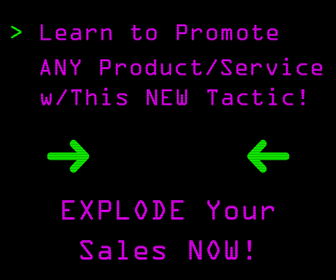When it comes to content, it's all about the headline.
Seriously. It's really, really important.
If you're a writer, and you take pride in your work, you might initially have some reservations about the whole “clickbait” thing.
But it works.
And really quickly, let me just put in my 2 cents about the term “clickbait.”
I hate the term.
Because the way people use it nowadays is VERY different from the original meaning.
Clickbait used to be when you click on an ad or an article, and the reason that you clicked was either simply NOT THERE, or it was buried 75 pages into the post.
Today, people use the term “clickbait” when it's simply a compelling headline.
But as long as you actually deliver on the content you represented in your headline, you're fine.
Rant over.
At the end of the day, there are certain headline structures that are the most likely to seduce your audience into clicking through to check out your blog post or landing page.
Don't be afraid to be a little bit “clickbaity,” especially on Facebook.
It gets more eyes on your content, and brings in a lot more traffic. And when you see that traffic in your analytics, well, it's a really awesome feeling.
So what types of headlines are we talking about here?
In a recent blog post, AdEspresso published a pretty awesome rundown of the five kinds of headlines that snag attention on Facebook almost every single time.
If you haven't been driving the traffic you'd hoped for, try these on for size.
5 Types of Attention-Grabbing Headlines for Facebook
1. Get customers thinking with a question
People want answers. Questions lead them to that logical conclusion.
That’s why questions also receive 150% more click-throughs than standard statements. The number jumps to 175% if you include the word “you” (more on that later).
This question-method plays into the popular PAS formula. You’re presenting a problem by way of a question that needs to be answered. And that conveniently positions you to provide the solution/answer.
Take investment advisor Phil Town’s ad (below). His customers have extra money that they need to invest. First world problems, amIright?! “But what am I supposed to do with all this extra money?!?!” I’m joking. But that’s more or less the train of thought, here.
Here, he’s targeted their exact need:
2. Use commanding words
No beating around the bush here.
These headline types tell your customer exactly what you want them to do.
Combine this with a good image and some quality copy and they’ll be hooked and ready to take the action.
OptiMonk wants customers to “Get” the app. And they aren’t shy about it.
But they also offer a good reason to “get” it!
There’s the 18% average revenue increase. There’s the “Shopify #1” claim. And then there’s social proof in the reviews back up that bold statement.
3. Offer a value proposition
Customers want to know what they will get from the product or service.
Good headlines tell them how your product will make their life easier/better/more exciting. And is a better approach than just telling what the product or service does.
If you use Shopify, you can obviously take your site and business global. Quite the benefit.
4. Make them wonder
Clickbait is a bit of a dirty word. But you can’t deny it’s lure.
“You won’t believe” what we know and you don’t know. Click.
A good headline will tease what you’re linking to, and will be so juicy and exciting that users won’t be able to resist clicking through.
Upworthy does this a lot. For example:
This “giving them the popcorn without the butter approach” provides just enough to pique their interest and makes them want to know more.
5. Leverage listicles
Lists help viewers process information more quickly.
Maria Konnikova says that the numbers and bullets help break down and differentiate from the onslaught of content users see all day.
And headlines with numbers in them are the highest performing when it comes to click-throughs, preferred by 36% of individuals questioned in a recent study.
You can find more great Facebook advice over at AdEspresso.
CHALLENGE Yourself to Profit!
Free Download: Build Your Profit-Generating Online Business With This Free Blueprint
Sign Up, follow the easy steps and You'll get the tactics, strategies & techniques needed to create your online profit stream. It's free!








